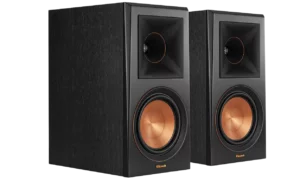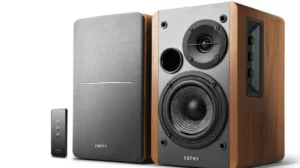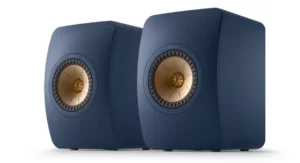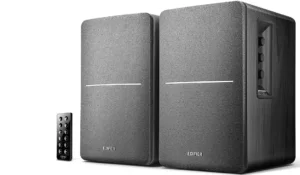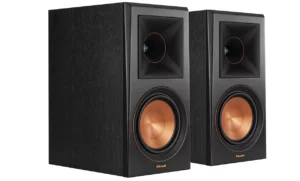
The Best Bookshelf Speakers in Canada
In today’s world, there are many ways to listen to music. Some people prefer wireless earbuds or headphones, while others opt for the convenience of a Bluetooth speaker. But one of the best audio systems you can use is a pair of bookshelf speakers. Most models have superior sound quality that is crisp and full of detail. However, selecting a pair of bookshelf speakers can be challenging. There are many options to choose from, as well as various factors to consider. That’s why we created this buying guide for the best bookshelf speakers in Canada. We listed our top picks in various categories. You will also see some of things you should look for when shopping for bookshelf speakers. So, without further ado, let’s get started.
Our top picks
What to look for in bookshelf speakers, plus other considerations
Size: Bookshelf speakers tend to be small in size, but larger models are available. The size you select will depend on your current set up. In other words, do you have enough space to fit the speakers. Most speakers will fit on stands, shelfs, or cabinets. Your best bet is to research a speaker’s dimensions and see if you have the appropriate space.
Price: This can influence the quality of the bookshelf speaker. Expensive speakers usually have better sound quality. Cheaper options have decent sound quality, but they typically are inferior when compared to higher end models. Affordable bookshelf speakers sometimes are made with less durable material. Another factor to consider is whether you need to purchase additional items like audio cables or an amplifier. This can add to your budget.
Active or passive: There are two types of bookshelf speakers, active and passive. Active speakers have built-in amplification, which means they do not require an amplifier to be powered. Simply plug them into a outlet and they are ready to go. Passive speakers must be paired with an amplifier in order to operate. The two are usually sold separately, and most times you will need to buy additional audio cables. Active bookshelf speakers are good for people who do not want to buy additional components. Plus, they are popular for their convenience and their ease of use. But passive speaker give you more freedom in adjusting the sound quality. You can experiment with different amplifiers to change the speaker’s sound. You also get more flexibility in your set up. Since active speakers plug into an outlet, they must be always close to it. Passive speakers can be placed further away from the amp.
Deciding between the two comes down to your budget and personal preferences. If you don’t want to deal with extra items, then you should go with active bookshelf speakers. If you want greater control over sound quality and your home audio set up, then passive speakers are for you.
Terminology: The audio world is full of complex terms that refer to various things. Trying to learn all of them can be confusing. However, here are four terms you should know about when researching bookshelf speakers:
- Hertz and Kilohertz: These terms will tell you a speaker’s frequency response. In other words, the range of sound it produces that is audible to the human ear. The difference between the two is that hertz usually measures bass frequencies, while kilohertz deals with higher frequencies. The lower the hertz, the more bass a speaker will have. If a speaker has a low kilohertz measurement, it will be very high-pitched. Try to find speakers with a balanced frequency response. An example would be 40Hz-20khZ.
- Watts: This term tells you how much electrical energy the speaker can handle. If you exceed the maximum limit, the speaker will overload and break down. Many bookshelf speakers have watt ratings of 100W and higher. Wattage is measured in either peak or RMS value. The difference is that peak values have shorter durations, while RMS values are continuous. Also, the peak value is much higher than the RMS. That’s why a speaker be more or less powerful than what is listed. Your best bet is read the product booklet for the full specs.
- Ohms: Ohms measure a speaker’s impedance. This represents the difficulty in powering the speaker. A lower impedance rating means the speaker is more efficient in moving the electric signal through its system. Most bookshelf speakers are rated either six or eight ohms. Cheaper versions are typically rated at four ohms.
- Drivers: Also knowns as a transducer, the driver is the mechanical part of the bookshelf speaker. Their job is to convert the electrical energy of the audio signal to mechanical energy. This is done by moving air to create sound. Two driver components are the woofers and tweeters. The former produces bass, while the latter deals with higher frequencies. Some bookshelf speakers have a midrange driver. These models have a fuller, balanced sound.
Break in period: Once you’ve purchased a pair of bookshelf speakers, the first thing you’ll probably want to do is play some music. However, new speakers actually go through a break-in period in which the sound quality and response changes. It mainly affects the two flexible parts of a speaker, the spider and the surround. The spider holds the voice coil, which moves the speaker cone forwards and backwards. The surround is the material around the woofer. It connects the speaker cone to the cabinet. At first, both the spider and the surround are a bit rigid. Therefore, they initially work harder when playing audio. That is why the sound of new bookshelf speakers is not as good. Over time, the stiffness loosens, and the moving parts operate more effectively. You should also see an improvement in sound quality. The experts at Fluance recommend you set aside a 10-hour window to break in new bookshelf speakers. They also suggest playing bass heavy music at a volume where you can see the cone move back and forth. This forces the spider and surround to operate at their maximum level. But be careful to not overdo the volume. Playing new speakers at an extremely high volume might damage the components. It is better to start at a normal volume and gradually increase it over time. Besides music, you can also play special burn in tracks which play white, black, or pink noise. You can download them off the internet or find them on YouTube.
If you don’t want to play your speakers for 10 hours straight, you can gradually break them in as you use them.
Please Note: Sound is subjective; everyone hears things differently. One person might hate how a speaker sounds, while another person will thoroughly enjoy it. Keep this in mind when you are shopping for bookshelf speakers. Consider what your personal preferences are when it comes to audio quality. This will help narrow down the right bookshelf speaker for you. If possible, test out the speakers in store. This will give you true sense of how they sound and whether you like the quality.
Best bookshelf speaker overall
Klipsch RP-600M
Specs
- Dimensions (Width, Height, Depth): 7.95 x 15.69 x 11.85in
- Weight: 16lbs
- Power Handling (RMS/Peak): 100w/400w
- Frequency response: 45Hz-25kHz
- Impedance: 8 ohms
The Klipsch RP-600M is our pick for the best bookshelf speaker in 2022. This model from Klipsch is designed to produce crystal clear audio with minimal distortion. The tweeters have a vented design to enhance the detail and clarity in high frequencies. The woofers are made from a material called Cerametallic™. This material is both rigid and lightweight to achieve maximum efficiency. The speaker’s rear port links the cabinet to the woofers to improve airflow and reduce air turbulence. This design elevates lower frequencies.
Hooking up an amp and other devices to the Klipsch RP-600M is fairly simple. The speakers have five-way screw input terminals. They accept either banana plugs or bare wire, both up to 12 gauges. The terminals are colour coded to make the set up easier.
In terms of the overall aesthetic, the Klipsch RP-600M is available in 3 colour schemes: ebony, walnut, and piano black. Each scheme has a sleek modern look. The speaker cabinets are built to last; a scratch resistant finish is applied to the surface. Lastly, the speakers have a removable magnetic grille. They are easy to remove, which prevents accidental damage.
The sound of these bookshelf speakers was a hit with several customers. Many people said the frequencies were effectively balanced. The midrange was present and full, the bass was strong but not overpowering, and the treble was clean without being too bright. Customers also said that the audio was detailed and smooth without top-end harshness. The colour schemes were another popular point for customers. The piano black was a standout among the three. At $698.00 CAD, most people were surprised at how well these speakers performed. They did not expect speakers at this price point to have such exceptional sound quality.
However, some people had issues with the speaker’s treble frequency. A few customers said the treble sounded too harsh and shrill. But some acknowledged that this was a subjective opinion. The Klipsch RP-600M is larger than most bookshelf speakers, so this might pose an issue for people living in small apartments or houses. But outside of these two issues, the Klipsch RP-600M is built to please everyone. This model has been built up by many reviews, and it definitely lives up to the hype.
Pros
- Detailed and balanced sound.
- Speaker grilles are easy to detach, prevents accidental damage.
- Appealing colour schemes.
Cons
- Larger than most bookshelf speakers. Can be a problem for smaller spaces.
- Some people might find the treble too harsh.
Most affordable bookshelf speaker
Edifier R1280T
Specs
- Dimension (Width, Height, Depth): 6 x 10 x 6in
- Wight: 11.1lbs
- Power output: 41W total
- Frequency response: 75Hz-19 kHz
- Impedance: 6 ohms
Bookshelf speakers can be expensive. If you’re looking for an affordable option, then look no further than the Edifier R1280T. These speakers cost around $159.99 CAD, and you get plenty of value in return. These are active speakers, so you do not have to buy an amplifier to power them. Technically, only one of the speakers is active, while the other is passive. The active speaker houses the amplifier plus three control dials to adjust bass, treble, and volume. While you can adjust the volume to your liking, it will be reset to a default level each time the speakers are powered on. To give you more control, the speakers come with a small remote. With this compact device, you can mute the speakers and adjust the volume.
The Edifier R1280T connects with multiple devices, like laptops, tablets, phones, or record players. The speakers have dual RCA inputs, which enables RCA to RCA or RCA to AUX connections. The required cables are included with the speakers.
For a cheap set bookshelf speakers, the Edifier R1280T has great audio quality. Several customers were surprised at how well these speakers sounded considering the price. The mid and high frequency are well balanced and clean. The bass is strong and dynamic; it does not sound flat. The design of these speakers was a hit. The wood panelling gave off a retro 70s vibe that appealed to many people. Some customers also liked that the Edifier R1280T is an active speaker. It made set up easier and it helped them save money (they did not have to buy an amplifier and additional cables).
While the remote does come in handy, there is some room for improvement. There could be more controls on the remote, like adjusting the treble and bass levels or turning the speakers on/off. Some people said that the dials on the side of the active speaker were somewhat ineffective. They did not have a wide range and any adjustments made were barely noticeable. Also, the dials are not in the best spot. Depending on your set up, they can be hard to reach.
Despite these issues, the Edifier R1280T has plenty of value at its price point. With surprising sound quality and an appealing design, these bookshelf speakers are a great affordable option.
Pros
- Good sound quality for the price.
- Appealing retro design.
- Easy set up.
- You do not have to buy an amp or extra audio cables.
Cons
- Dials are somewhat ineffective.
- Dials are not in the best positions.
- Remote could have more controls.
Best for audiophiles
KEF LS50 Meta
Specs
- Dimensions (Width, Height, Depth): 7.90 x 11.90 x 11.00 in
- Weight: 17.20lbs
- Power output: 40-100 W
- Frequency response: 47Hz-45kHz
- Impedance: 8 ohms
In 2012, KEF launched the original LS50 to celebrate the company’s 50th anniversary. The model proved to be so popular that it has remained in production for many years without any major adjustments. In 2020, KEF released an updated version of the original speaker, the LS50 Meta. This bookshelf speaker has several features that make it a must own product for audiophiles.
The overall speaker is designed to produce the best sound possible with minimal distortion. Several components are made with Metamaterial Absorption Technology (MAT™). This material eliminates 99% of high frequency distortion to achieve a more natural sound. The LS50 Meta’s drivers utilize KEF’s 12th generation Uni-Q array. This driver design delivers a more detailed and balanced sound. The drivers also evenly disperse the audio throughout the room. Even the speaker cabinet is designed to improve the audio quality. The cabinets’ smooth and curved surface helps radiate out sound without interference.
Many people marveled at the LS50 Meta’s exceptional sound quality. The audio was crisp, balanced, well defined, detailed, and accurate. Several customers also liked the aesthetic of these bookshelf speakers. The LS50 Meta looked sleek and modern, plus the matte colour schemes were eye catching. There were some minor complaints toward KEF’s LS50 Meta. Some people said the treble was too bright for some songs. However, these reviewers said this issue might depend on your hi-fi setup (e.g., the amp used to power the speakers). Another complaint was that the bass was not strong enough. While many people said that the bass was decent, others felt it was not strong enough. One solution would be to pair these speakers with a subwoofer. Lastly, the KEF LS50 Meta is expensive; they usually sell between $1,500-$3,000 CAD. But if you are a devout audiophile, then these bookshelf speakers are a great option.
Check out this YouTube video for an in-depth review of the KEF LS50 Meta
Pros
- Accurate and detailed audio.
- Designed to reduce sound interference.
- Appealing outer design
Cons
- Expensive.
- Treble might be too bright for some people.
- Some people might find the bass lacking.
Best Bluetooth bookshelf speaker
Specs:
- Dimensions (Width, Height, Depth): 5.7 x 9.2 x 7.7in
- Weight: 10.6lbs
- Power output: 42W
- Frequency response: 55Hz-20kHz
- Impedance: 6 ohms
The Edifier R1280DB are almost identical to the R1280T. The treble, volume, and bass dials are located on the side of the active speaker. The R1280DB has the same 4 in bass driver and 13 mm silk dome tweeter. Plus, the colour schemes remain the same. The main difference is that the R1280DB has Bluetooth technology. Now you can connect devices to these speakers without having to deal with extra cables. If you still want a wired connection, RCA inputs remain on the back panel. The remote has also been updated. You can power the speakers on/off, pause or skip songs, and switch between inputs.
Adding Bluetooth technology to these bookshelf speakers was a welcome upgrade. It made the set up much easier and faster. One person said they were able to connect and play music in less than five minutes. Customers also said that the Bluetooth connection was strong. The added controls to the remote was a big step up for many people. The audio quality was balanced with plenty of presence and detail. While some audiophiles may not like the speaker’s sound, it should please the everyday listener. The R1280DB works well in small spaces, but it not designed to fill a large room with music. A subwoofer is needed to get a more powerful sound. Some glitches may occur with these bookshelf speakers. The Bluetooth connection may drop out, or songs might skip or lag. Outside of these tech issues, the Edifier R1280DB is a capable bookshelf speaker with plenty of features at a reasonable price.
Pros
- Bluetooth connectivity makes set up easier.
- Remote has added controls.
Cons
- Some glitches with Bluetooth may occur.
- Not suited for larger rooms
Our methodology
For this buying guide, we spent over eight hours researching various bookshelf speakers. We only considered models rated four or more stars. Our team consulted several audio websites to learn more about bookshelf speakers. We also read many customer reviews to get a sense on what people look for in bookshelf speakers. In the end, we tried to select speakers that balanced good audio quality, easy of use, and affordability.
Frequently asked questions about bookshelf speakers
What is a bookshelf speaker?
Bookshelf speaker are basically compact loudspeakers. As their name suggests, they are typically placed within a bookshelf. They can also rest on a table, tv stand, desk, or other elevated areas.
What are bookshelf speakers best used for?
Bookshelf speakers are capable of many things. People primarily use them to play music, whether it be from their computer, smartphone, or record player. Bookshelf speakers also work well when paired with a tv. Gamers have also included bookshelf speakers in their gaming set up. However, some models may not perform well in a home theatre setting; the loud volume required for this set up can cause crackling and distortion.
How to set up bookshelf speakers?
This is a very important question to ask. Your set up can impact several factors, and it can influence how much enjoyment you get out of your bookshelf speakers. While set ups can differ for each listener, here are some good tips to follow.
Despite their name, placing bookshelf speakers in an actual bookshelf may not be the best idea. Sound may resonate within the confined space, which will distort the audio. Some good options for speaker placement are media stands or wall mounts. The position of bookshelf speakers within a room can affect the sound you get in return. Placing them close to a wall amplify the bass. The strength decrease the further the speakers are from the wall. Try to find a balance between the bass and the other frequencies. The goal should be to have a clean stereo sound with a bit of punch to it. One thing you should not do is place bookshelf speakers in a corner. Doing this will create a muddy sound. A general rule of thumb is to angle the speakers inward to your normal listening spot. The speakers should also be equidistant from each other. Aim for the tweeters to rest at ear level. This position will give you the best sound imaging possible.
As mentioned earlier, most bookshelf speakers need a break in period for their components to stretch out and warm up. Break in times can vary between each model. Some speakers only need 24 hours, while others need 72 hours or more. Whatever the case may be, play the speakers at a reasonable volume level. Playing them at an extremely loud volume right of the bat might damage the speaker.
Speaker cables are something you should not overlook. Make sure you have the right length to link your speakers together and with other devices (like an amp or subwoofer). Also ensure you have enough cables to wire your bookshelf speakers to your stereo system.
At the end of the day, setting up bookshelf speakers takes a lot of time and experimentation. Be prepared to make minor adjustments and tweaks to the speaker placement. But the time and effort you put in is worth it. You’ll end up with a great sounding speaker system.
For an in depth look at setting up bookshelf speakers, check out this article from WhatHifi.com.
What is the best way to hide bookshelf speakers?
There are a couple of reasons why people hide their bookshelf speakers. The speakers might not mesh well with the room’s décor. Some people do not like the look of visible speakers. Whatever the reason, here are some ways you can camouflage your bookshelf speakers with out compromising their sound quality.
Grille clothes are a great way of disguising your bookshelf speakers. They are pieces of fabric that attach to the front of the speaker; they conceal the tweeter and woofers. While grille clothes do not completely hide your bookshelf speakers, they can make them look more appealing. You can also find cloths that match the style of the room.
Cabinets can be ideal places to hide bookshelf speakers. Just make sure that the door is perforated so the audio can come through. If the door is completely solid, you can swap it out with a speaker screen or grille.
There are other creative ways you can hide your bookshelf speakers. One DIY method is to make framed fabric speakers. They are designed to look like picture frames, except they actually house a bookshelf speaker. This method does require you to disassemble the speaker. Plus, it is best used for small models. But the end result looks amazing.
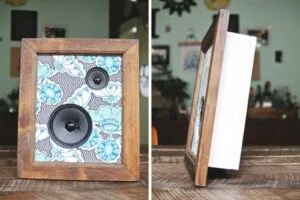
An example of a framed fabric speaker. Source: Shelterness
One thing to be aware of when hiding bookshelf speakers is wiring. The speakers may be concealed, but the wiring might still be seen. Wiring also limits you in where you can hide your speakers. They still need to be close to their power source, whether it be a wall outlet or amplifier. If you want to avoid the wiring headache, consider using Bluetooth bookshelf speakers instead. Cables are not required to connect devices, and you have greater freedom in where you conceal your speakers.
If you want to learn more about concealing bookshelf speakers, check out this article by The Klipsch Joint.
Sources used
The Klipsch Joint: Bookshelf Speakers: What You Need To Know
B&H Photo, Video, Audio: What About All Those Speaker Specs?
What Hi-Fi?: How to set up and position your speakers in four simple steps
Read more
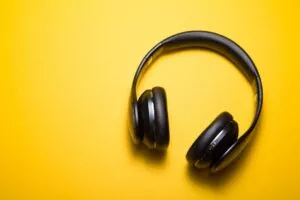
The Best Wireless Headsets in Canada
These wireless headsets let you talk and listen hands free.

Sennheiser CX True Wireless Earbuds Review
Looking for a good pair of wireless earbuds at a reasonable price. Check out this review to learn more.
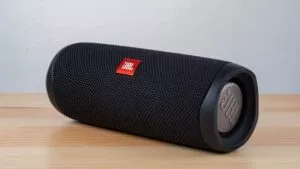
The Best Bluetooth Speakers in Canada
Bluetooth speakers provide a high-quality audio experience wherever you go, from adventures outdoors to staying in.
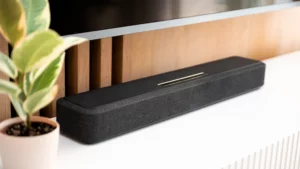
The Best Soundbars in Canada
The soundbars in this list are a perfect match for any TV.
